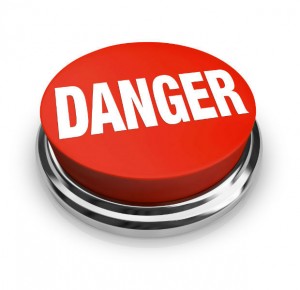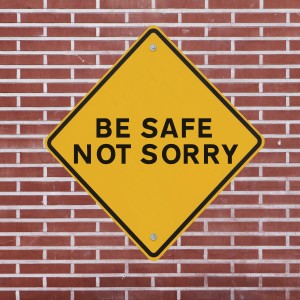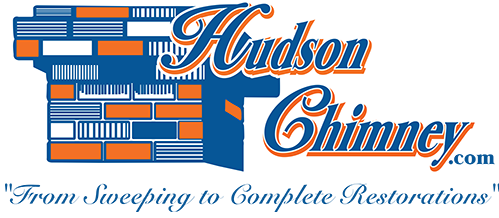by Mark Hudson | Sep 26, 2016 | Appointment Tips
As the evenings get cooler and days grow shorter, we’re inching closer to burning season. If you have a fireplace, stove, or other heating appliance you are probably in tune with the signs that tell you burning season is coming quickly. If fall is approaching and you haven’t had your chimney cleaned since last burning season, you should schedule a chimney sweep now. While scheduling your chimney maintenance you can keep this five things in mind to ease the process.

Find a Chimney Sweep You Can Trust
Before scheduling your chimney maintenance, you should find a chimney sweep that is CSIA certified. Check online reviews, and call if you have questions before scheduling an appointment. You will be spending your hard-earned money and putting your home in the hands of this chimney sweep, so you should be able to trust them.
Schedule in Advance
The Chimney Safety Institute of America (CSIA) and the National Fire Protection Association (NFPA) recommend regular chimney sweeps and annual chimney inspections. Schedule these appointments in advance, and avoid the hassle of scheduling during the fall rush or during the winter. It’s often frustrating to schedule chimney maintenance during the winter because you can’t use your chimney for 24 hours before the appointment. If you need repairs, replacements, or rebuilds your chimney will be out of commission for even longer. Avoid this headache by scheduling in advance.
Prepare for Your Chimney Sweep’s Visit
Prepare for the chimney maintenance by discontinuing use of the chimney for 24 hours prior to the cleaning. Before the visit you should also clear a space of about 6 feet in front of the fireplace or appliance, as well as remove all sentimental items and valuables from the mantel and around the fireplace.
Maximize Your Time With the Sweep
Some chimney sweep companies might not allow distractions while their CSIA Certified Chimney Sweep® (CCS) works, but this is a great time to learn about the chimney system. Hudson Chimney is happy to accommodate homeowners who’d like to watch our technicians work. Ask questions while our sweep is working—he’ll let you know if he’s too busy to interact with you. It is our goal as CSIA members to educate homeowners above all else. Chimney safety starts with you.
Follow Recommendations from the Sweep
Depending on what your technician is doing, whether a sweep or inspection, he should offer expert advice. You should listen to the professionals you hire to work on your chimney. There is nothing wrong with getting a second opinion, but when it comes to a professional opinion about a repair or replacement, you should plan these things sooner rather than later. When you wait to repair a damaged chimney you can cause more damage and raise the risk of fire.
It’s important to schedule and keep chimney maintenance appointments, and by keeping these tips in mind you can avoid missing something important that may save you time and money.
If you’re ready to schedule your chimney appointment call Hudson Chimney at 904-282-4159 or request an appointment online.
by Mark Hudson | Jun 10, 2014 | chimney maintenance

Leaky chimney got you down? Give the pros at Hudson Chimney a call!
Hudson Chimney has been giving quality chimney services for over thirty years now. And throughout our experience, we’ve collected a considerably wide knowledge when it comes to chimney problems and issues.
One of the most common issues that we’ve encountered throughout our experience is the case of the leaky chimney. Seven out of ten households with chimneys have been complaining about leaks and are asking for help to resolve said issue.
Here are a few things that you may find informative and rather helpful.
The common causes of chimney leaks:
- Although chimneys are generally concrete, there are cases wherein only the outside is solid and the inner portion is filled with solid fillers. According to the Chimney Safety Institute of America, majority of the masonry materials utilized are actually porous and are prone to absorbing water. The process of filling the brick plus the nature of the materials used makes the brick more susceptible to having cracks and channels that may serve as an entrance for water. One cracked brick is relatively harmless. But imagine fifty bricks or more? The amount of water that can pass through that is enough to cause an annoying leak around your house.
- For aesthetic purposes, many people make use of fashionable bricks in their chimneys. These bricks are more porous and rough on the surface compared to its regular counterpart. The key thing to look out for when using fashionable bricks is its flashing. The most preferred and advisable flashing to utilize is either the lead, lead coated copper or the copper (gold).
- Chimney flashing is done to prevent leakage. But sometimes when flashing is improperly installed, worn, inadequate or even corroded, this would backfire and cause what it’s meant to prevent in the first place.
Warning signs that your chimney is leaking:
- When you hear a constant, omnipresent dripping noise.
- Cracks and deterioration in the flue lining
- Water stains on or around your chimney
What you can do to fix it!
Your first instinct once you suspect your chimney is leaking is to go up there and see for yourself if there’s anything amiss. Although this is relatively the first thing you can do, it’s not as practical and effective as you may think. 80% of the time, people without training won’t be able to detect a leaky chimney or know how to remedy it. The quick and effective solution? Call our professionals and schedule an appointment as soon as possible so we can have your chimney waterproofed as well as install a chimney cap or crown!
by Mark Hudson | May 27, 2014 | chimney maintenance
Carbon monoxide poisoning can be fatal. It can also cause other unpleasant symptoms like headaches. If your chimney is not regularly cleaned and inspected, obstructions can interrupt the flow of air…putting you in danger.

If anything clogs the air flow or draft in your chimney, you are at risk for carbon monoxide poisoning.
The Facts
Carbon monoxide is a toxic gas that is formed through moisture, incomplete combustion and negative air pressure. It usually happens when there are people who smoke in the house, fuel-burning devices most especially in your chimney. Carbon monoxide is common inside the chimney because of the air that goes in and out of the chimney and also the particles that come from open combustion; complete or incomplete.
It cannot be seen, felt and also doesn’t have any odor. When you experience symptoms like nausea, headache and fever that are all too familiar, you tend to think it’s just a case of the common flu. So you don’t have it examined by a medical professional. However, only a thorough medical examination by your doctor can determine whether or not it is carbon monoxide poisoning. A piece of advice: when you feel ill, go and see your doctor. Early diagnosis and treatment will benefit you in the long run.
Prevention
To proactively stop carbon monoxide from entering your home, it’s always good to have your chimney checked ad swept regularly. Also, the use of carbon monoxide detectors or alarms can prove to be very useful. They help in determining if carbon monoxide is present inside the house and if it is mild or already too dangerous.
A chimney cap will also help big time. It will lessen the chances for water to seep in since it’s the number one cause of most of the problems in the chimney. It can also prevent any bad air from coming in and allowing bad smoke to also go out properly.
We have been serving the beautiful people in the northeastern part of Florida for over thirty years now, we are proud of the services we provide. Let us become your trusted source for all things chimney.
by Mark Hudson | Apr 8, 2014 | chimney maintenance, fire safety
Let’s Talk Creosote Removal
Have you noticed any black particles and burnt-like marks on your chimney walls? You might think it’s just stained because of the smoke, however these should not be underestimated, because creosote buildup can become quite dangerous.

Don’t forget to have your chimney cleaned and inspected at least once a year to maximize output and safety.
What is that black substance coating your chimney walls? It’s called creosote, a chemical byproduct of open combustion from burning either hardwood or softwood. These two types of wood usually need to be seasoned and dried up to at least six months so that only minimal production of creosote is made. This means that creosote production is inevitable and the biggest dilemma once creosote has built up in your chimney is the probability of chimney fires occurring.
So because we can’t prevent it from forming, the next best thing is to make sure that it is regularly removed. When you talk about creosote buildup, there are three levels. Thankfully our CSIA-licensed chimney sweeps here at Hudson Chimney are ready to take full control and assess, clean and remove creosote.
Level I
The first stage is usually called soot. It’s still flaky and dusty like ash only that it’s found in the chimney walls. It is the slightest form with maybe a layer or two and can easily be removed by a chimney brush. We usually just brush it off. The process takes very little time but before the removal process is done, we first inspect and do a little cleaning.
Level II
The second stage of creosote already has tar-like features. It is now harder to remove and we usually need to use stiffers or special kinds of brushes. By now, the layers are getting thicker. Removing it will take more time than usual. During this level, creosote is building up to be more flammable and more dangerous. Nonetheless, it can still be removed.
Level III
The last and final stage is the most difficult to remove and the most dangerous. It is no longer called creosote but it is now called glaze. It is thick, totally black and is like candle wax; a hard, glossy, dark mass. By now, the chance of chimney fires occurring is greater.
To prevent this, constant cleaning and removing of creosote is the ultimate key. Once creosote starts to build up, contact Hudson Chimney so that we can monitor and lessen the problem. Give us a call and we’ll tell you more!
by Mark Hudson | Nov 18, 2013 | chimney maintenance
Chimney Inspections and What They Cover
It is highly recommended that homeowners have their chimneys inspected on an annual basis. Having a professional come in to look at the chimney is the best way to spot any potential hazards before they endanger the household. Before finding an certified sweep to do the job, it is important to understand exactly what should be included in an annual inspection.
One of the first things that a chimney inspector will look at is the structural integrity of the chimney itself. Over time, a chimney can become damaged or weak, especially if there is excessive exposure to rain and snow. They will make sure that the actual structure is still strong and does not pose any risks to the rest of the home.

When a certified chimney sweep does an inspection of your chimney, there are certain trouble spots that are always checked.
In addition to looking over the general structure of the chimney, the sweep will look at the individual parts. This will include an inspection of the flue liner and damper, among other important elements. They will be able to tell the homeowner whether any individual parts of their chimney require maintenance or repair. Remember, it is necessary for all parts of the chimney to be in good working condition in order for it to function safely.
A chimney professional will be able to tell whether there is a buildup of creosote in the chimney. Creosote is the substance left behind after treated wood and coal have been used for making a fire in the fireplace. It can pose a number of different risks, including internal illness and irritations to the skin and eyes. It is also highly flammable, so a home with a buildup of the material is at a greater risk for a chimney fire than those who have it inspected and cleaned.
During a chimney inspection, there may also be evidence of material clogging the chimney. In many cases, this is the result of animals that have made their home in the flue. A clogged chimney is a serious problem because it prevents smoke and gas from exiting the home the way they are supposed to. As a result, a chimney fire could ignite or the family inside of the home could become ill when they are exposed to the gasses.
It takes specialized training and experience to properly and thoroughly inspect a chimney. The Chimney Safety Institute of America is the organization that trains and certifies all qualified chimney technicians. It is necessary to only use a CSIA certified inspector in order to get the most reliable results. The CSIA website offers a useful tool to help find a qualified technician in the area.
To some homeowners, a chimney inspection just seems like an extra chore and an unnecessary expense. However, an annual inspection is the only way to make sure that the chimney is in good working condition and not putting the home at risk. Be sure to use a chimney inspector who has been trained and certified by the Chimney Safety Institute of America in order to get the best results.





